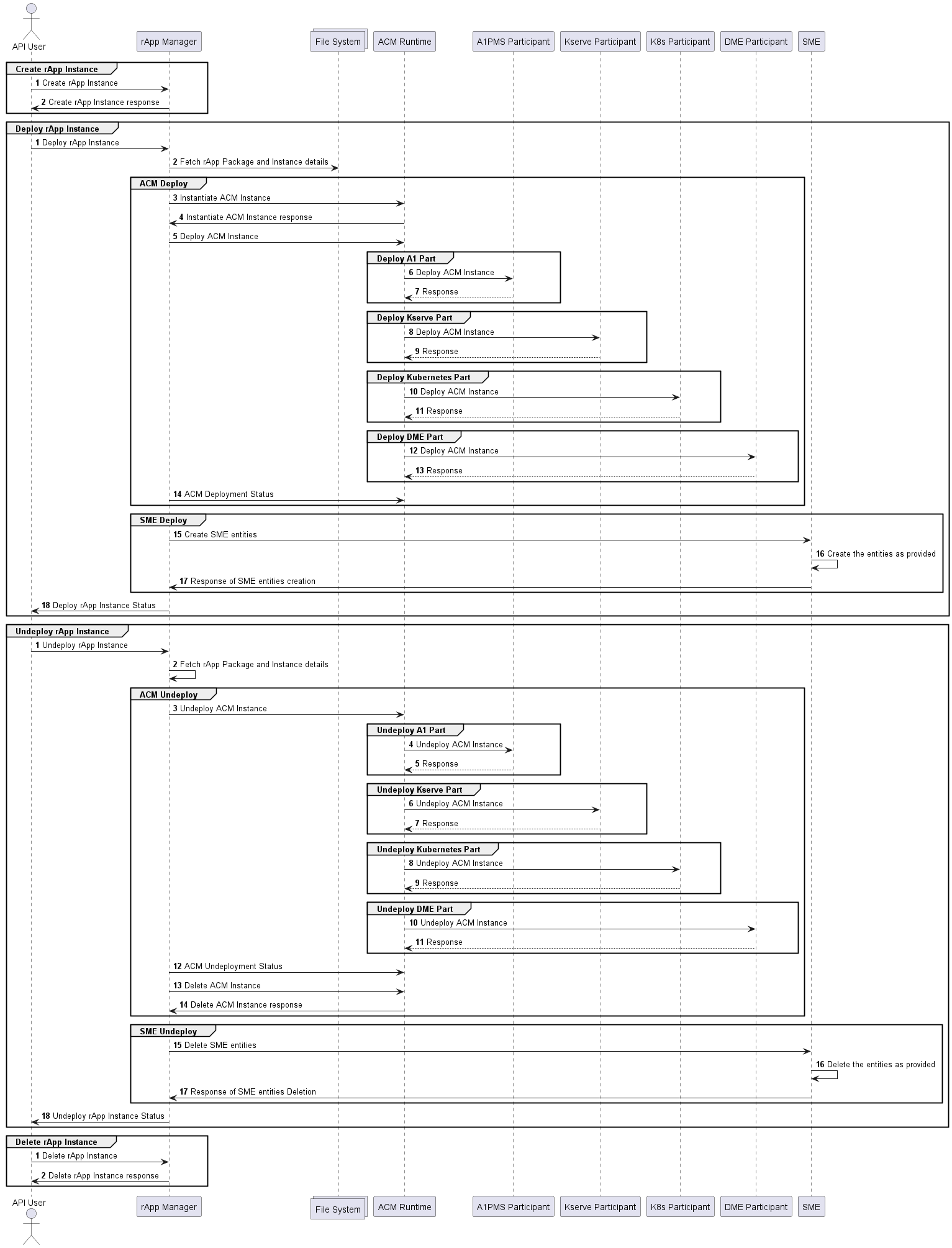...
ACM composition and instance details can be provided as part of rApp package and the package structure can be found here.
DME
The DME(Information Coordination Service (ICS)) is a generic service that maintains data subscriptions. Its main purpose is to decouple data consumers and data producers in a multi vendor environment. A data consumer does not need to know anything about the producers of the data. More details about DME can be found here.
...
Information type, Data producer/consumer information can be provided as part of rApp package and the package structure can be found here.
SME
The SME(CAPIF) stands for Common API framework and it was developed by 3GPP to enable a unified Northbound API framework across 3GPP network functions, and to ensure that there is a single and harmonized approach for API development. More details about DME can be found here.
...
Service exposure/access related configurations can be provided as part of rApp package and the package structure can be found here.
State Transitions
rApp States
...
Create rApp InstanceAPI user request to create rApp Instance with the resource details from rApp package API user get the rApp instance creation response
Deploy rApp InstanceAPI user request to deploy rApp instance rApp Manager fetches the rApp package from file system and fetches the
resources mentioned in the rApp instance. rApp Manager request ACM-R with the necessary details from rApp package to
Instantiate ACM instance rApp Manager gets instantiate ACM instance response rApp Manager request ACM-R to deploy ACM instance ACM-R deploys the A1PMS instance if it is configured in the ACM instance ACM-R gets the A1PMS deployment status ACM-R deploys the Kserve instance if it is configured in the ACM instance ACM-R gets the Kserve deployment status ACM-R deploys the Kubernetes instance if it is configured in the ACM instance ACM-R gets the Kubernetes deployment status ACM-R deploys the DME instance if it is configured in the ACM instance ACM-R gets the DME deployment status rApp Manager gets ACM deployment status rApp Manager request SME to create the entities in rApp instance SME creates the entities provided by rApp Manager rApp manager get the response of SME entities creation API user provided with the status of rApp instance deployment. rApp Manager combines
the status of ACM deployment and SME deployment to provide the rApp instance status.
Undeploy rApp InstanceAPI user request to undeploy rApp instance rApp Manager fetches the rApp and rApp instance details rApp Manager request ACM-R to undeploy the ACM instance ACM-R undeploy the A1PMS instance if it is already deployed ACM-R gets the A1PMS undeploy status ACM-R undeploy the Kserve instance if it is already deployed ACM-R gets the Kserve undeploy status ACM-R undeploy the Kubernetes instance if it is already deployed ACM-R gets the Kubernetes undeploy status ACM-R undeploy the DME instance if it is already deployed ACM-R gets the DME undeploy status rApp Manager get ACM undeploy status rApp Manager request ACM-R to delete the ACM instance rApp Manager get response of ACM instance deletion rApp Manager request SME to delete SME entities SME deletes the entities created as part of rApp rApp Manager get the response of SME entities deletion API user get the status of undeploy rApp instance
Delete rApp InstanceAPI user request rApp Manager to delete rApp Instance API user gets delete rApp instance response
| |
|---|
Sample rApp package structure
...
This is a prototype and subject to change
...
The sample rApp package structure shown below and the location of relevant files for each integration is provided.
...
